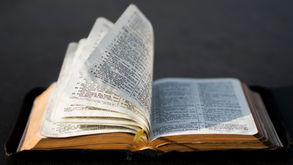The Arc - International Administrative Buildings of the Bahá’í Faith
- Uplifting Words

- Apr 8, 2020
- 4 min read
Significance of the buildings on the Baha'i Arc in Haifa, Israel

The Arc is the name given to the area of Mount Carmel in Haifa, Israel, and facing the Mediterranean sea, along which the international administrative buildings of the Bahá’í Faith have been built. It was conceived by the Guardian of the Faith, and the buildings and the connecting pathway, are along an arc traced geometrically from a point in the Monument Gardens, midway between the double tomb and the single one. There is much more accommodation in the buildings on the Arc than is visible to the eye. For example, the Seat of the Universal House of Justice has nine or ten storeys, some being underground and others cleverly hidden by the design of the building. At the rear of the complex is an underground car park, and the Centre for the Study of the Texts is also connected to the International Archives Building below ground level.
There are to be five buildings upon the Arc:
International Archives Building
The International Archives sits to the furthest right as you look upon the Arc from the bottom of the mountain. It is the first building to be built on the Arc and holds the collection of personal relics of Bahá'u'lláh, the Báb and 'Abdu'l-Bahá, original manuscripts and Tablets in the handwriting of Bahá'u'lláh and the Báb, and other items associated with the Bahá’í Faith, but most importantly is built for the viewing of the paintings and drawings of Bahá’u’lláh and the Báb, along with a single photograph of Bahá’u’lláh. Although some of these items are available on the internet today, most Bahá’ís prefer to see these items only in a reverent atmosphere, during the pilgrimage. Shoghi Effendi wanted to display these in a way in which they could be viewed reverentially by visiting Baha'is.
Before the completion of the International Archives building in 1957 these mementoes were housed in three rooms adjoining the Shrine of the Báb (the 'Major' Archives) and, later, also in a small house in the gardens near the monument to the Greatest Holy Leaf (the Minor Archives).
Shoghi Effendi announced his decision to build the International Archives building in 1952 and by 1954 work was under way. Shoghi Effendi chose the Parthenon as the basis for the design possibly due to the apparent enduring beauty even after thousands of years. The capitals of the fifty columns were Ionic rather than the Doric Order. It has a green tiled roof and measures 32 X 14 metres and is 12 metres high. It was finished in 1957 however Shoghi Effendi never lived to furnish the interior. It was while he was staying in London to purchase furnishings for the newly-completed building that he passed away. This was left to his wife Rúhíyyih Khanum. The interior consists of a large display hall with a surrounding balcony. A large extension connected to the basement of the original building has been constructed as part of the current Arc buildings. LEARN MORE >
Centre for the Study of the Texts
The Centre for the Study of the Texts sits immediately to the left of the International Archives Building. It is the third building of the Arc Complex that was built, and was completed and occupied in 1999. It was inaugurated in May 2001. It consists of study rooms for resident and visiting scholars, meeting and conference rooms, a large reference library, a secretariat and other ancillary spaces totaling 7750 m² (83 420 ft²). The building is integrated into the mountain with a portico that reflects the classical motifs of the other buildings. The offices of the building enjoy natural light directly or through light wells, patios, and skylights.
It now houses the Research Department, and is the temporary home of the International Bahá’í Library and other offices. LEARN MORE >
Seat of the Universal House of Justice
The building on the Arc of Mount Carmel which houses the council chamber and offices of the Universal House of Justice. The Universal House of Justice wrote that the Seat 'will not only serve the practical needs of a steadily consolidating administrative centre but will, for centuries to come, stand as a visible expression of the majesty of the divinely ordained institutions of the Administrative Order of Bahá'u'lláh.'
The building, designed by architect Husayn Amanat, was begun in 1972 and completed in 1982. The second building of the Arc Complex, the Seat of the Universal House of Justice, is designed in the ancient Greek Corinthian style. The classical exterior provides a monument of enduring Classical beauty in the gardens, while the interior provides very modern and flexible facilities for this administrative centre.
The importance of the Seat of the Universal House of Justice in relation to the other buildings on the arc is clearly expressed by its location at the centre of the Arc as well as by architectural details, its size and height. LEARN MORE >
International Teaching Centre Building
The Seat of the International Teaching Center is where the International Teaching Center is based. Special events were held in January 2001, during the conference of the Continental Counsellors, which Auxiliary Board members were, for the first time, invited to attend, to mark the occupation by the International Teaching Centre of its permanent seat on Mount Carmel. This coincided with the announcement by the Universal House of Justice of the beginning of the fifth epoch of the Formative Age of the Faith. LEARN MORE >
International Bahá’í Library
To the left of the International Teaching Centre the land falls away, but it is intended to construct the International Bahá’í Library at some point in the future. There was an indication by the Guardian of the Faith that completion of the Arc would coincide with the implementation of the Lesser Peace.
























